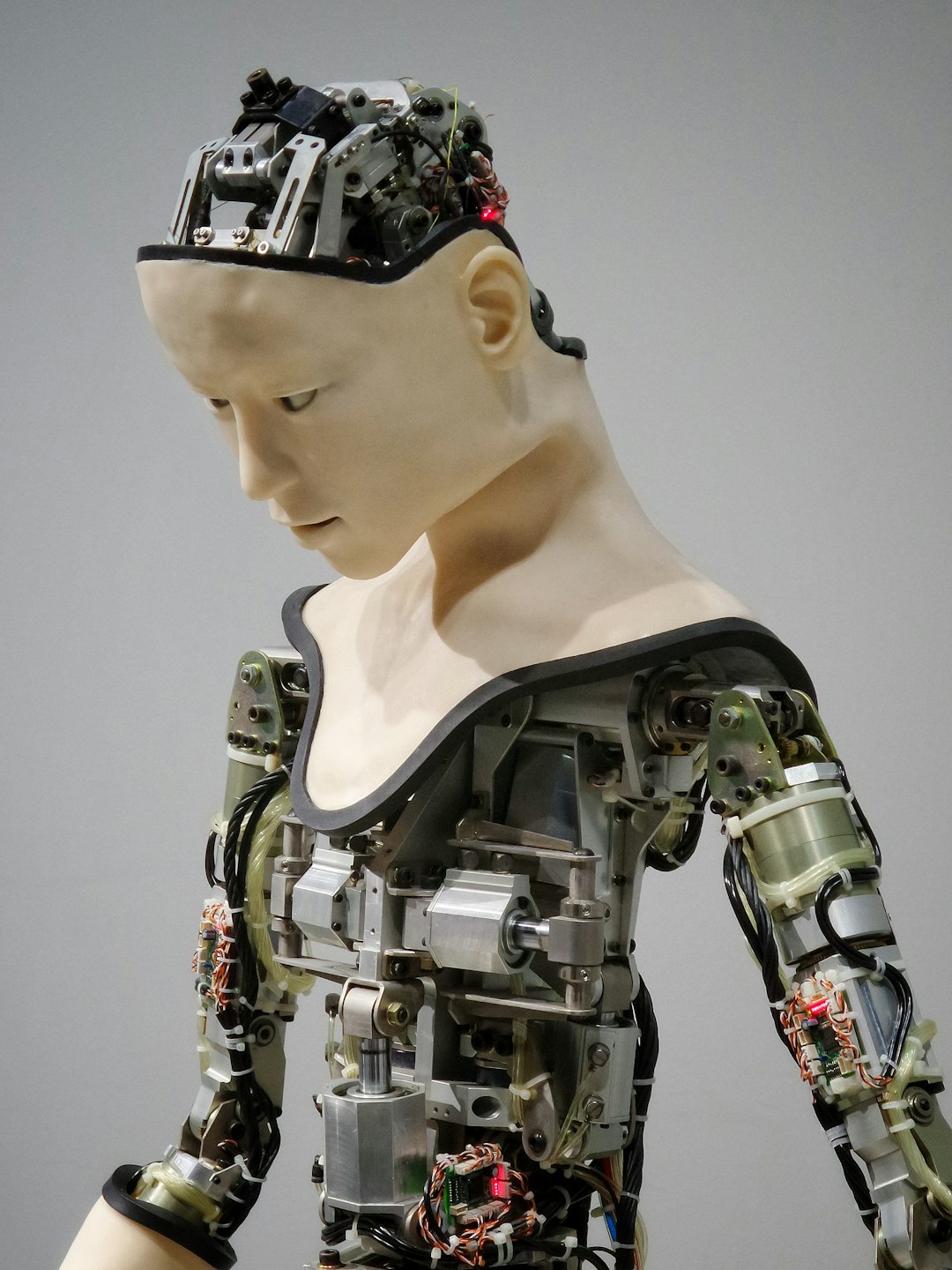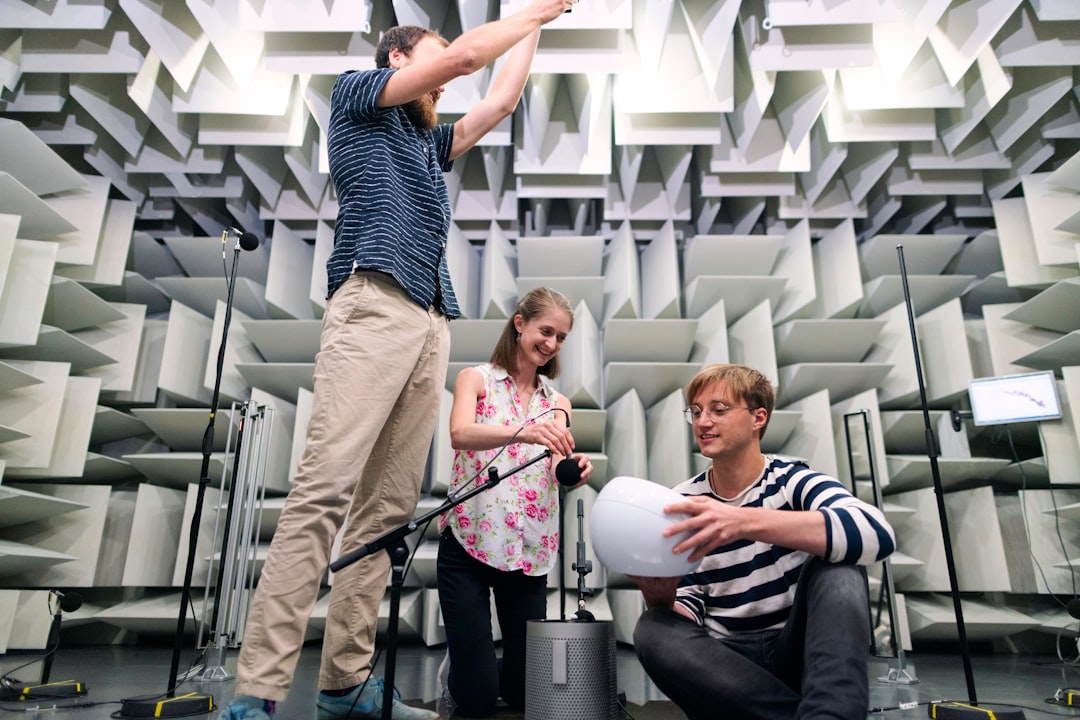Unlock encrypted content
Please enter your SSCE key to initiate on-the-fly decryption.
Decryption key: (Click cancel if you don't have the key)
Copied link to clipboard.
This feature is unavailable for free accounts. Upgrade now and enjoy all Premium benefits.
Go Premium!
This feature is unavailable for free accounts. Upgrade now and enjoy all Premium benefits.
Go Premium!
Please open this page in browser ( Google Chrome or Safari ) to use this feature.
Open In Browser
Wearable Devices: Revolutionizing the Way We Interact with Technology
Random related video for this blog.
Copied share link to clipboard.
One of the most exciting advancements in recent years is the rise of wearable devices. These innovative gadgets have revolutionized the way we interact with technology, offering convenience, accessibility, and a whole new level of personalization. From fitness trackers to smartwatches, wearable devices have become an essential tool for people of all ages and lifestyles.
Enhancing Connectivity with Smart Contracts
Smart contracts are another groundbreaking technology that has gained significant attention in recent years. These self-executing contracts, built on blockchain technology, have the potential to revolutionize various industries, including finance, real estate, and supply chain management. With the help of wearable devices, smart contracts can be seamlessly integrated into our daily lives, offering enhanced connectivity and security. Imagine a scenario where you enter a grocery store wearing your smartwatch. As you pick up items and place them in your shopping cart, your wearable device automatically tracks the products and updates your shopping list in real-time. Once you reach the checkout counter, your smart contract is executed, and the payment is automatically deducted from your digital wallet. This eliminates the need for physical cash or card transactions, making the entire process faster, more secure, and hassle-free.The Power of Edge Computing
Edge computing is a paradigm shift in the world of technology. Traditionally, data processing and storage have been centralized in large data centers. However, with the growth of wearable devices and the Internet of Things (IoT), the demand for real-time data processing and low-latency applications has increased. Edge computing brings the processing power closer to the source of data, reducing latency and improving efficiency. Wearable devices heavily rely on edge computing to provide instant feedback and personalized experiences. For example, a fitness tracker collects data about your heart rate, steps taken, and calories burned. Instead of sending this data toa remote server for analysis, edge computing allows the device to process the data locally. This enables real-time feedback on your fitness goals, making your wearable device an invaluable tool in achieving a healthier lifestyle.
Quantum Encryption: Securing Our Digital Lives
In an era where data breaches and cyberattacks are on the rise, ensuring the security of our digital lives has never been more critical. Quantum encryption offers a solution to this growing concern. Unlike traditional encryption methods that rely on complex mathematical algorithms, quantum encryption uses the principles of quantum mechanics to secure data transmission. Wearable devices can leverage quantum encryption to protect sensitive information, such as personal health data or financial transactions. By utilizing the fundamental properties of quantum mechanics, such as entanglement and superposition, wearable devices can establish secure communication channels that are virtually impossible to intercept or hack. This level of security ensures that our personal data remains confidential and protected from malicious actors.Robust Downloading Tools for Seamless Experiences
Downloading files, whether it's a document, image, or video, has become an integral part of our digital lives. However, slow download speeds or interrupted connections can be frustrating and time-consuming. Thankfully, robust downloading tools have emerged to address these challenges and provide seamless experiences. FileLu, a leading cloud storage provider, offers a range of features that enhance the downloading process. With its lightning-fast servers and reliable infrastructure, FileLu ensures that users can download files quickly and efficiently. Additionally, its large file transfer capabilities allow users to send files up to 250 GB in size, making it the ideal solution for individuals and businesses alike.Revolutionizing Aerial Photography with Robotics
Aerial photography has come a long way since the days of manned aircraft and helicopters. Today, drones equipped with high-resolution cameras have become the go-to tool for capturing breathtaking aerial shots. These drones, often controlled by wearable devices such as smartwatches, offer unprecedented flexibility and control, enabling photographers and videographers to capture stunning images from unique perspectives. Drones equipped with robotic technology can autonomously navigate through complex environments, capturing images and videos with precision. This level of automation and control allows photographers to focus on their creative vision while the drone takes care of the technical aspects. Whether it's capturing landscapes, events, or real estate properties, aerial photography with robotics has opened up a world of possibilities for photographers and filmmakers.Data Storage and Cloud Computing for Robotics
As robotics technology continues to advance, the amount of data generated by robots is increasing exponentially. From autonomous vehicles to industrial robots, these machines rely on vast amounts of data to make informed decisions and carry out complex tasks. This data needs to be stored securely and accessed in real-time, which is where cloud computing comes into play. Cloud computing provides a scalable and flexible solution for robotics data storage and processing. By leveraging the power of the cloud, robotics companies can store and analyze massive amounts of data without the need for expensive on-premises infrastructure. This allows for efficient data management, seamless collaboration, and faster innovation in the field of robotics.Conclusion
Wearable devices, smart contracts, edge computing, quantum encryption, robust downloading tools, aerial photography, robotics data storage, and cloud computing are just a few examples of the exciting advancements in technology that are shaping our future. These innovations offer convenience, security, and enhanced capabilities, making our lives easier and more connected than ever before. As we continue to embrace these technologies, it is essential to stay informed and explore their potential applications in various industries. From healthcare to finance, education to entertainment, the possibilities are endless. By leveraging the power of wearable devices, smart contracts, edge computing, and other cutting-edge technologies, we can create a future that is more efficient, secure, and personalized.Frequently Asked Questions (FAQs)
Question: How can wearable devices enhance our daily lives? Answer:
Wearable devices offer convenience, accessibility, and personalization, allowing us to track our health and fitness, receive notifications, and interact with technology in a more seamless and intuitive way.
Question: What is the role of edge computing in wearable devices? Answer:
Edge computing brings the processing power closer to the source of data, enabling real-time feedback, personalized experiences, and reduced latency in wearable devices.
Question: How does quantum encryption secure our data? Answer:
Quantum encryption utilizes the principles of quantum mechanics to establish secure communication channels, making it virtually impossible for hackers to intercept or access sensitive data.
Question: How can robotics revolutionize aerial photography? Answer:
Robotic drones equipped with high-resolution cameras offer unprecedented flexibility and control, allowing photographers and videographers to capture stunning aerial shots from unique perspectives.
Question: What role does cloud computing play in robotics? Answer:
Cloud computing provides a scalable and flexible solution for robotics data storage and processing, allowing for efficient data management, collaboration, and faster innovation in the field of robotics. For more information about secure file transfer, backup, and storage, visit FileLu.
By Amelia Isabella
Email: [email protected]
Related
Seamless File Integration with Third-Party Apps: Enhancing Efficiency and Collaboration...
June 23, 2023
Read More
Reputable Project Management Software: Boosting Efficiency and Collaboration
June 23, 2023
Read More
Efficient File Manager System: Preview All Photos, Docs, Spreadsheets, and...
June 24, 2023
Read More
<h2>Unmanned Aerial Vehicle (UAV) Data Analytics: Revolutionizing Industries</h2>
June 24, 2023
Read More
Nanotechnology: Paving the Way for Futuristic Gadgets and Advanced Storage...
June 24, 2023
Read More
Popular
Latest
The Future of Digital Transformation: Exploring Smart Homes, Efficient File...
November 30, 2025
Read More
Exploring the Benefits of Cloud Storage and Innovative Technologies in...
November 26, 2025
Read More
The Future of Technology: Exploring Biohacking, Space Tourism, and Digital...
November 23, 2025
Read More
The Future of File Sharing: Streamlined Workflows for Photographers and...
November 19, 2025
Read More
Exploring the Intersection of Technology: From Cybersecurity to Augmented Reality...
November 16, 2025
Read More
The Future of File Management: Embracing Edge Computing and Efficient...
November 12, 2025
Read More
The Future of File Sharing: Exploring User-Friendly Solutions and Data...
November 5, 2025
Read More
The Future of Cloud Storage: How FileLu Empowers Creative Professionals...
November 2, 2025
Read More
The Future of Autonomous Technologies: Innovations in Robotics, File Sharing,...
October 29, 2025
Read More
Emerging Technologies Revolutionizing File Management: From Li-Fi to Robust Collaboration...
October 26, 2025
Read More
Emerging Technologies: Exploring the Impact of File Access Auditing, Genetic...
October 19, 2025
Read More
The Future of Data Storage: Exploring Advanced Encryption, Mobile Integration,...
October 5, 2025
Read More
Exploring the Future of Data Management: Security, Efficiency, and Cognitive...
September 28, 2025
Read More
Revolutionizing Data Management: Innovations in Storage, Security, and Sustainable Technology.
September 24, 2025
Read More





















